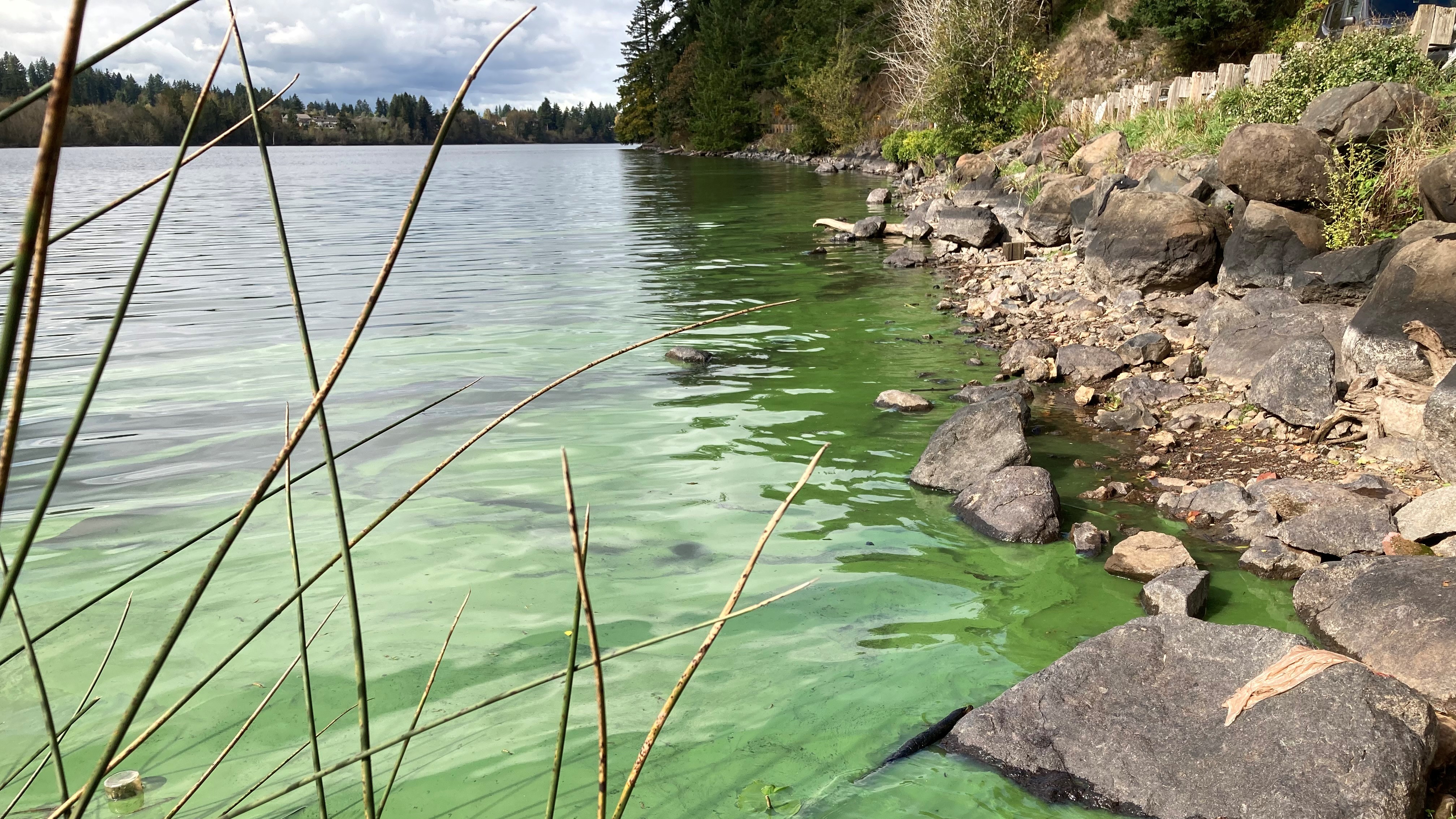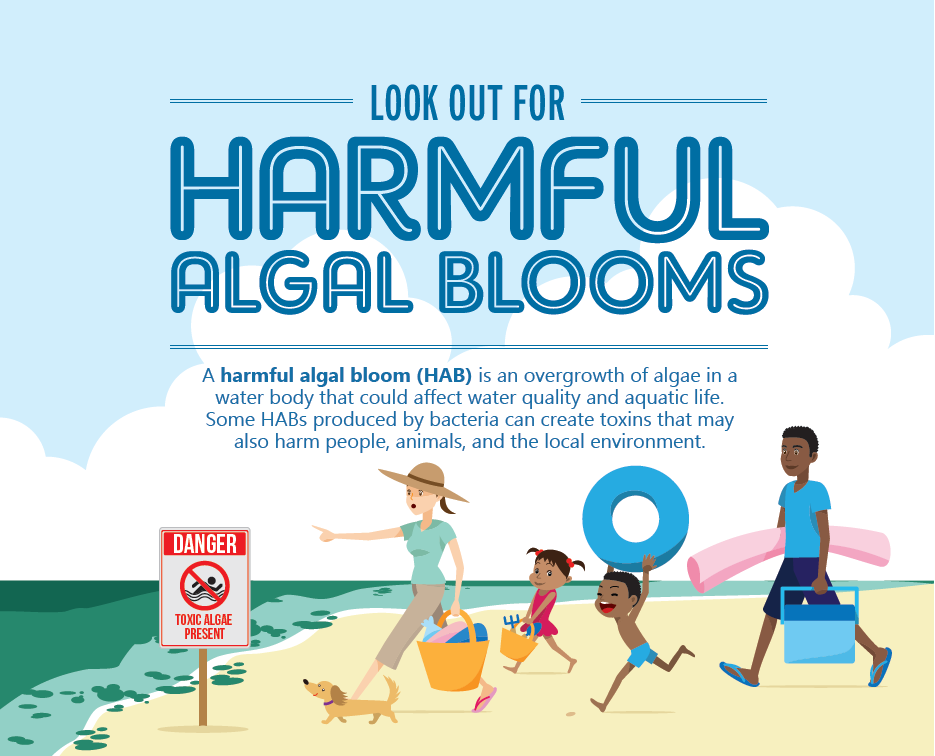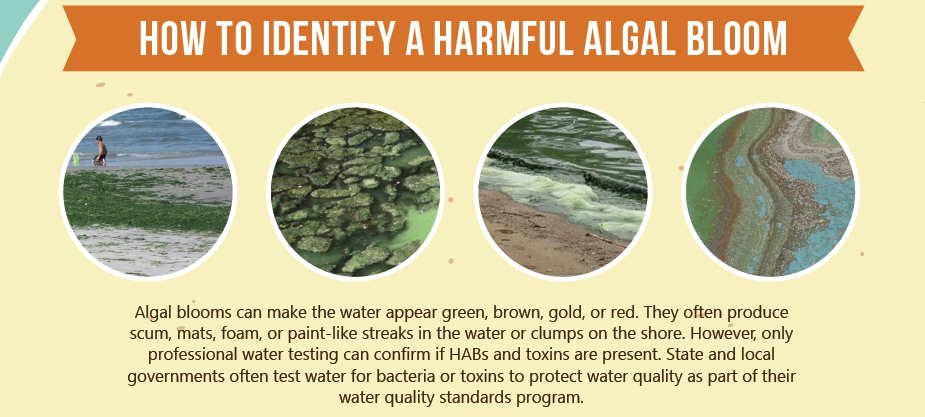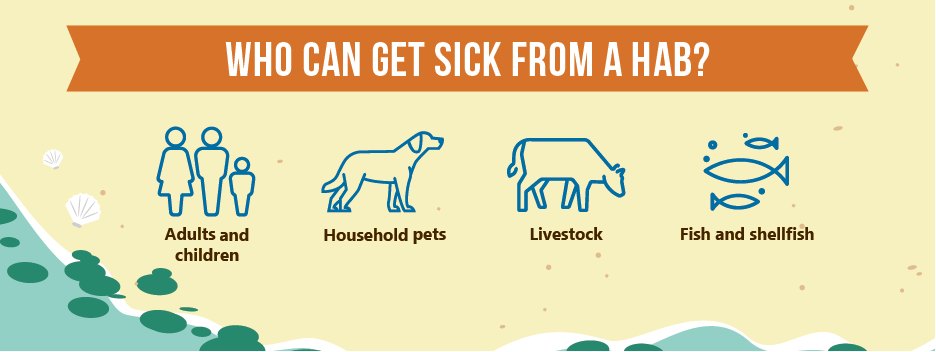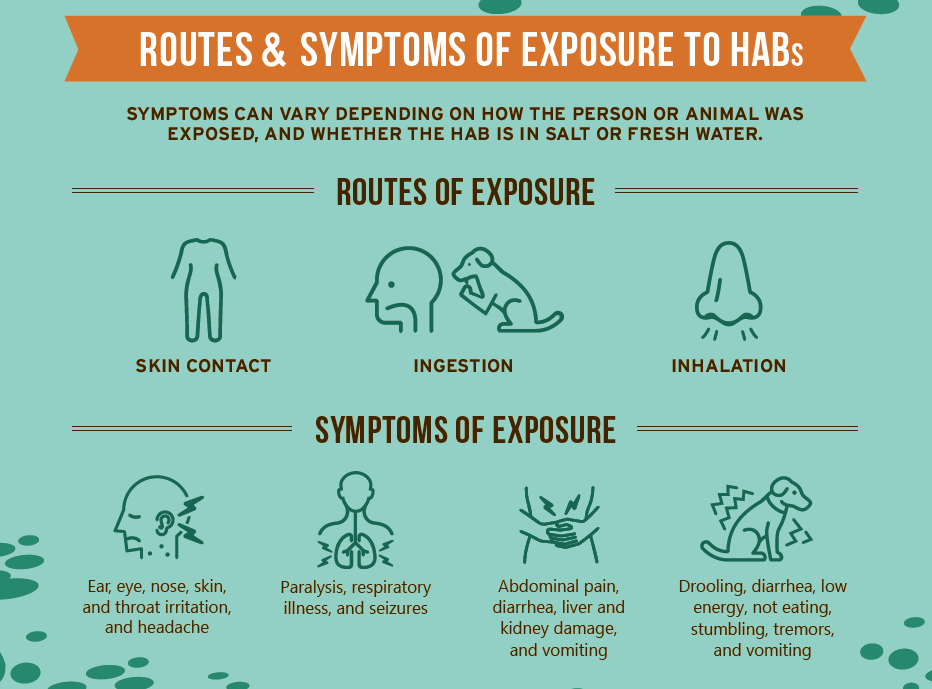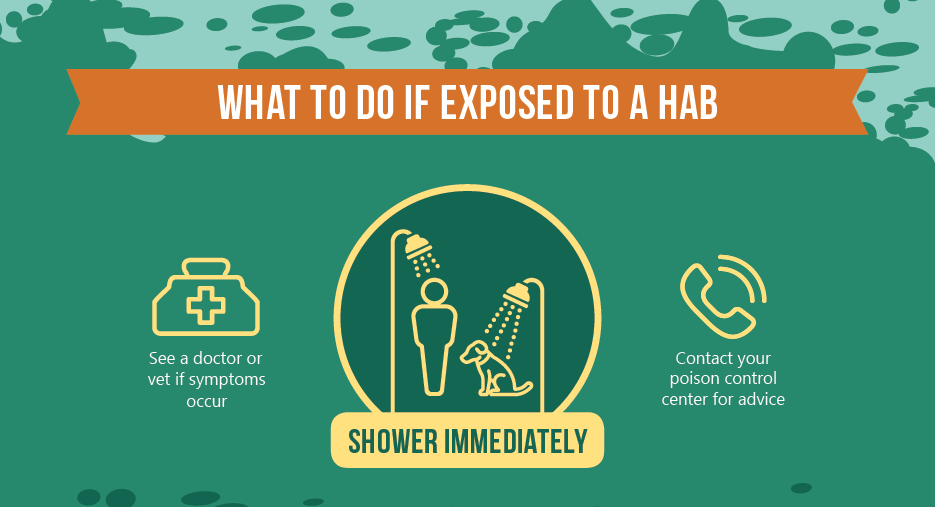The EPA has created an informative infographic outlining important information about Harmful Algal Blooms, or HABs, which Clark County has adapted below to provide information on:
Harmful algal blooms (or HABs) are overgrowths of bacteria that can photosynthesize like algae or plants by turning sunlight into energy.
DID YOU KNOW that cyanobacteria (formerly blue-green algae) are:
- Some of the oldest known organisms on Earth, arising approximately 3.5 billion years ago producing our oxygen rich atmosphere.
- Naturally present in all waterbodies and are vital to balance and maintain a healthy waterbody.
- They can become a nuisance or produce toxins during conditions that favor cyanobacteria growth.
- Ideal conditions for bloom formation are lots of nutrients in the water, sunlight, and warm stagnant water.
Clark County has several lakes that are prone to algal blooms year-round, while others may have a problem only sporadically. It’s always important to be aware of current conditions and vigilant when recreating in areas prone to algal blooms.
Many mistake plant algae or other aquatic plants as a harmful algal bloom. An algal bloom is comprised of microscopic bacteria that form a scum on the surface or are distributed throughout the water column.
A bloom will typically look like:
- Green, blue, or brown clumps or streaks in the water.
- Can look like paint has been dumped in the water or on shore where scum has dried.
We have year-round educational signs posted at several waterbodies prone to harmful algal blooms in Clark County, you can find more information here on our current advisories page. When recreating in an area prone to harmful algal blooms, its important to be aware of current conditions and be aware of surroundings before allowing children and small pets to enter the water. It is important to remember, when in doubt, stay out!
It is important to avoid contact with areas of scum and activities that provide a higher risk of exposure during a harmful algal bloom event. We issue advisories to limit recreation when conditions are hazardous and can cause acute illness. When a harmful algal bloom is reported, we sample the waterbody once every Monday or Tuesday testing for microcystin (liver toxin) and anatoxin-a (neurotoxin).
Algal blooms can produce potent toxins known as cyanotoxins that can cause serious illness and even death in animals and people.
How are people and animals getting sick from harmful algal blooms:
- Eating fish or shellfish from lakes or ponds that have toxic algae.
- Drinking water containing cyanotoxins.
- Breathing water droplets aerosolized during recreation containing cyanotoxins or cyanobacterial cells.
- Skin contacting water during swimming, boating, or other activities that involve submersion or splashing.
- Household pets licking algae or scum from their fur after swimming in contaminated lake.
- Blooms can deplete oxygen in the water suffocating fish and other aquatic organisms resulting in fish die-offs.
Children and household pets are most likely to experience more serious health effects due to smaller body mass and higher likelihood of ingesting water due to their behaviors.
When people or animals are exposed to cyanotoxins, adverse health effects may range from a mild skin rash to serious illness or death for animal exposures. Acute illnesses caused by short-term exposure to cyanobacteria and cyanotoxins during recreational activities include hay fever-like symptoms, skin rashes, respiratory and gastrointestinal distress. Exposure to drinking water contaminated with elevated concentrations of microcystin could cause liver and kidney damage while exposure to anatoxin-a will result in neurological symptoms ranging from paralysis, seizures, and tingling sensation.
If you do come into contact with water that is known to be contaminated with cyanobacteria and/or cyanotoxins, the Centers for Disease Control (CDC) recommends that you rinse off with clean, fresh water as soon as possible. Seek medical treatment right away if you think you or someone you know might have been poisoned by cyanobacterial toxins, especially when any of the symptoms mentioned above are recognized.
Benthic algae grow below the surface of the water in mats. Typically, the mats are attached to the lakebed or riverbed on sand, silt, submerged wood or plants, or stones. But the mats can detach and float on the surface of the water or wash ashore. These mats have been found in the Columbia River in Clark County. Check the shoreline of fast- and slow-moving waterbodies for algae mats before you or your dog go into the water. The algae mats may contain toxins that can make people and pets sick.
